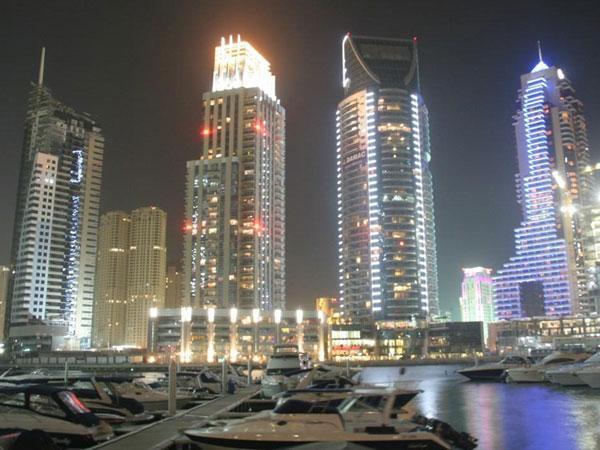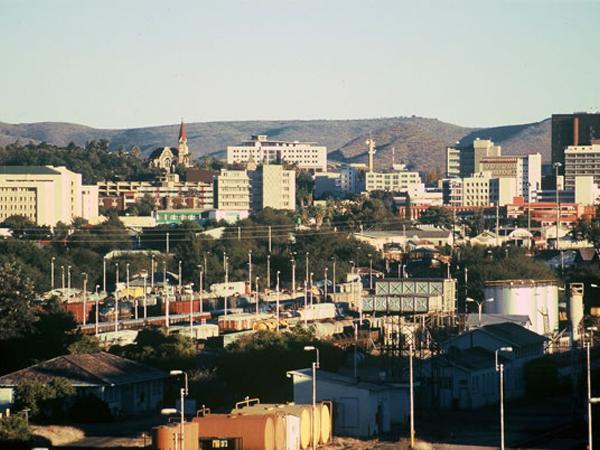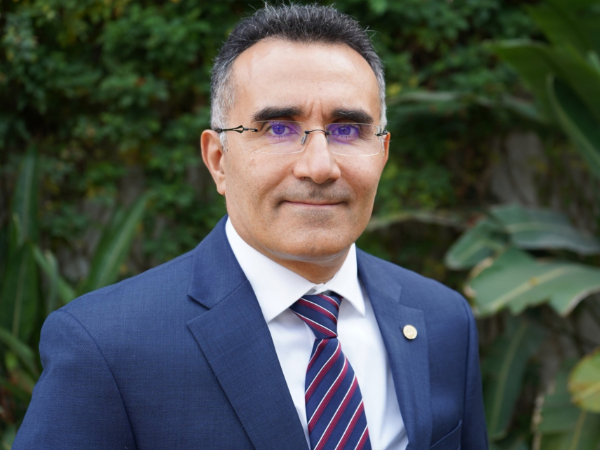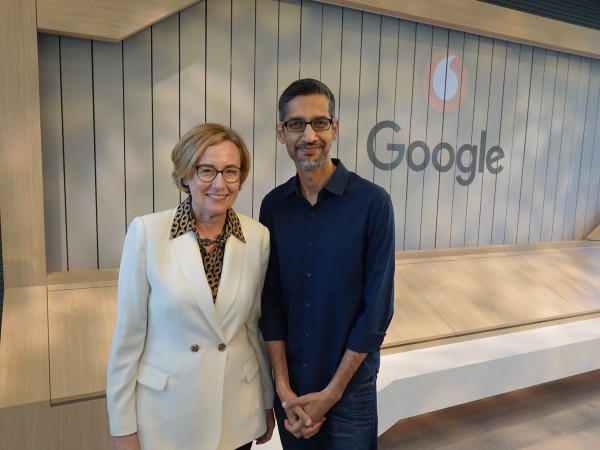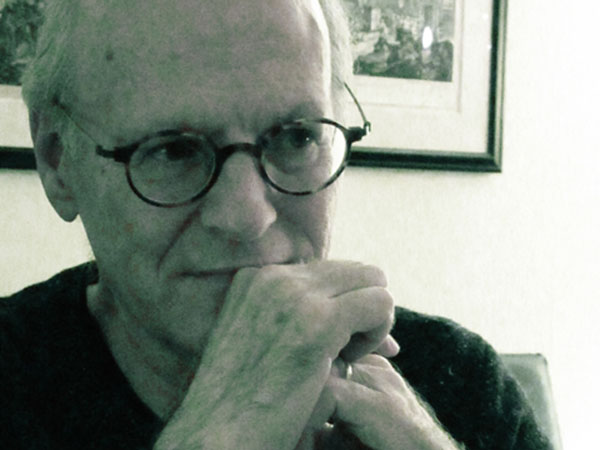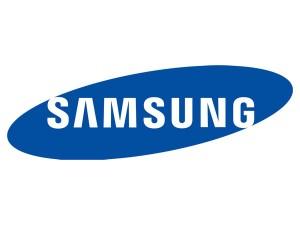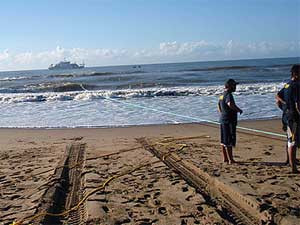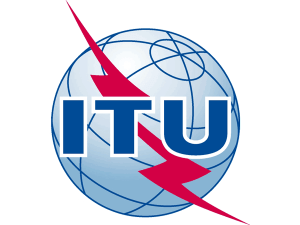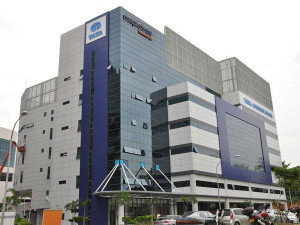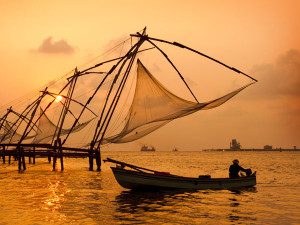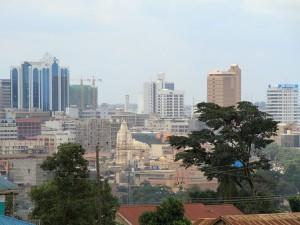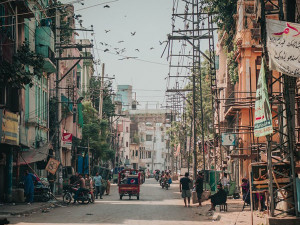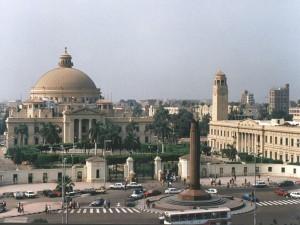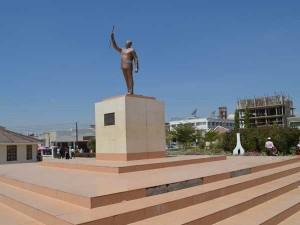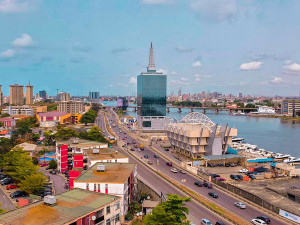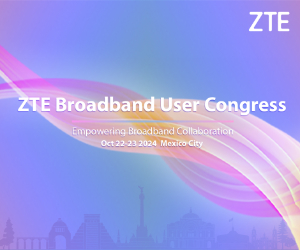Africa 2.0 – Inside a Continent’s Communications Revolution presents a 35-year history of the impact of mobile and internet on Sub-Saharan Africa.
It is arguably the biggest story to come out of the continent over the last couple of decades and is written for the general reader. We spoke to the book’s author Russell Southwood – the founder and CEO of consultancy and research practice Balancing Act, which has focused on Africa’s telecoms sector for the past 20 years.

From the very start, the book underlines the differences between Africa and the rest of the world – but highlights that these differences have perhaps resulted in the growth of mobile and internet having a bigger impact in Africa than anywhere else worldwide. What do you consider the factors that have made the biggest difference in terms of the development of Africa’s telecoms sector?
In the 1980s many of the countries of Sub-Saharan Africa were at the bottom of most leagues, whether economic or social. Whatever optimism had been generated by the coming of independence, it had all but evaporated and the continuing existence of the Apartheid regime in South Africa was unfinished business. So many Governments that had started with democratic promise had turned into kleptocratic regimes that made it hard for business or social development to flourish. The region seemed to have hit rock bottom.
Liberalisation in many of Africa’s major markets produced an economic ‘success story’ and quickly delivered significant, conspicuous and widespread benefits. Better still, mobile operators seemed to be able to build their way around civil wars and political unrest that that scared off other investors. This changed one of the narratives about the continent – that it was an economic basket case – and encouraged other investors to look at its markets again.
The mobile operators made good returns and created jobs in significant numbers, generated a new skilled, indigenous workforce and paid significant taxes. Their economic impact spilled over into other economic sectors. Their advertising spend fuelled the growth of Africa’s newly privatised broadcasters and their sponsorship created new, popular TV programmes.
Finally, the continuing investment by all communications operators - and the new investment in online start-ups - created financial infrastructure that reached far more people than that of traditional banks and a communications infrastructure that knitted together communities within countries and regionally between countries.
Back in the 90s telecoms was often seen as strategically important and something only governments should manage. What has changed?
The process of market liberalisation in Africa demonstrated that private capital and global technology could address the overwhelming thirst for communications far more quickly than Government-owned telcos. An early study (1980) of the Ghanaian state incumbent quoted in the book found that it would take them 80 years to connect everyone on their waiting list.
You mention how, 20 years ago, you were intrigued by the idea that Africa could bypass some stages of development by skipping directly to the digital age. It could be argued that in many ways, this idea did indeed come to pass – what would you say are the best examples of this?
The most obvious way that Sub-Saharan Africa has leapfrogged traditional telecoms stages of development is by never having really built a fixed telecoms infrastructure to satisfy communications demand. The former fixed line state incumbents were spectacularly bad at meeting customer demand and were often very corrupt organisations. Privately funded and managed mobile operators faced almost ‘green field’ markets. For example, in Zaire (now DRC) when the first mobile operator launched, there were only 24,000 fixed telephone lines in what was then a country of around 30 million people.
The downside of this leapfrogging is that the original infrastructure was what might be called ‘narrow pipe’: you didn’t need that much capacity to transmit voice calls. But as the region enters the digital age, there is now a far greater need for higher capacity data infrastructure that will be the foundation of widening internet use. Luckily, companies are now investing to create and expand this infrastructure.
You make the point that the introduction of several cable systems was crucial in opening up Africa’s digital economy by delivering bandwidth without affording any operators a monopoly. What lessons were learnt from the failings of the initial SAT3 Cable system, and how did these help to open up the market and generate more demand for connectivity in Africa?
South Africa’s Telkom drove both the management and structure of Sub-Saharan Africa’s first big international fibre cable project, SAT3. It promised to meet the growing demand for high-speed international connectivity for the internet. The structure of ownership was a Club Consortium agreement that gave monopolies to national investors, who were mainly the state-owned telco incumbents.
This monopoly structure resulted in prices (for the first few years) that were only 10% below already expensive satellite prices. For a private company in a country to be able to join the consortium meant that it needed the votes of all 35 members to be admitted. No national monopoly member would vote for a new competitor to join them. Botswana had invested in SAT3 but couldn’t get access to capacity
The East African Business Summit in November 2002 (representing the business community) asked telecoms operators to put forward proposals to build an East African cable that was not a monopoly. Although Telkom SA wanted another monopoly cable, there were several companies – most notably MTN - who did not.
This time around the World Bank would only offer finance if the organisation running the cable was not structured as a monopoly and saw its primary task as lowering the price of wholesale fibre. To cut a long story short, there ended up being three East coast of Africa cables: TEAMS (promoted by the Kenyan Government), Seacom (a privately funded cable) and EASSy (a mixture of public and private funding). The net result of a more ‘open access’ approach to cable management was that wholesale prices sank to a fraction of the original prices offered by SAT3. And the new generation of cables – Google’s Equiano and partly Facebook-funded 2Africa – promise even larger amounts of capacity and again a further drop in prices.
Cable is arriving on many African shores, and some companies (like Liquid) are extending it into the interior. But can it help bring services to rural areas? Or will things like LEO be more cost-effective?
Connecting those living in rural areas is part of the unfinished business of Africa’s communications revolution. The biggest barrier has been the cost of delivering to remote areas. Various attempts have been made to use technological innovation: the Google Loon internet delivery by balloon closed down in 2021 and although more promising, the jury is still out on the Facebook-supported Telecom Infra Project. There are several other promising initiatives that work using different business models. Africa Mobile Networks rolls out and operates remote network as a service. Intelsat’s CellBackhaul gives a slightly different version of the same network as a service offer. In my humble opinion, if mobile operators are unwilling to address these rural markets, regulators should offer this opportunity to others.
Device affordability has long been an issue in Africa, with the sub-$100 and eventually sub-$50 smartphone representing milestones for adoption. While smartphones are gradually gaining a stronger foothold, what is driving this? What kind of smartphone-exclusive content and services are increasingly becoming indispensible in Africa?
One young Ugandan woman quoted in the book described getting a lot from her smartphone (in terms of internet and social media) without putting a lot into it. Another person talks about mobile (by which he means smartphones) as ‘the TV remote for young Africans.’ You can organise your social life and find love and/or sex, stream music and video content, play games, bet on sports events and summon a taxi. For the young, who are usually more confident with technology, a smartphone can simply do more than a basic phone with only voice, text and a torch. But smartphones come at a premium for lower-income Africans: data is still relatively expensive in the context of continental incomes; downloading and using apps like streaming is data-cost heavy and they require far more frequent charging.
We know all about the meteoric success of mobile banking in Africa. While mobile financial offerings have gained plenty of traction in other parts of the world, Africa is certainly a stronghold for them. Would you argue that their success in Africa demonstrates a viable use case for anywhere in the world, or is it that the continent itself is especially suited to such a model?
Although I think that many countries in Sub-Saharan Africa have made mobile money services their own, the region remains a place where cash remains king for many. Often those using mobile money transfer are using it as a cash transfer service. This is not to undercut the scale of what has been achieved, but the process of moving from cash to digital payments is a slow one and may take a great deal more time.
Mobile money transfer services have allowed diaspora funds to reach poorer relatives. Basotho miners and Burkinabe cacao workers can send money home or to their relatives and the scale of diaspora money transfers into African countries is staggering: in 2020, US$20.97 billion was transferred into Nigeria from overseas.
However, in a country like South Africa, which has a long-established banking system, it has proved much more difficult to make a success of mobile money services. The African countries where mobile money has taken off have been places where the absence of a competing banking system have created what is essentially a ‘green field’ market that can be filled with new offerings.
Chinese infrastructure suppliers have made great inroads into Africa by offering good quality products at lower TCO than those of rival vendors, to the extent that many operators in the continent rely on their equipment. There is political tension in developed markets around the use of Huawei and ZTE that has resulted in operators choosing to eschew these vendors altogether to avoid the trouble of being forced to replace them in the future. What are attitudes like among operators in Africa towards these vendors? Do they share similar security concerns as more developed markets, or are reliability and cost the only factors that matter?
Huawei provides two things financially that are irresistible for most African telco operators: the cost of the equipment is relatively low and China’s Exim bank provides loan financing. By one account, 70% of all 4G networks in Africa are provided by Huawei. However, this may yet be the high tide mark of Huawei’s dominance of teleco equipment sales on the continent for two reasons. Firstly, there is a steady drumbeat of reports pointing out the intentional security vulnerabilities in its equipment that allows access to user data, most notably in a report in Le Monde Afrique about the African Union. Secondly, both MTN and Vodacom are piloting new OpenRAN equipment which works on a very different supply basis and therefore may be cheaper disruptor to existing telco vendors.
Is it unrealistic to expect the emergence of an African tech vendor? Given that infrastructure designed or manufactured in other parts of the world is able to meet the particular demands of the African continent, is there an incentive for a home-grown infrastructure provider in the vein of the start-ups developing local African content?
Local tech manufacturing has proved one of the most difficult nuts to crack for the continent. Currently the continent lacks both the capital and the required expertise. There have been a number of attempts; overall there were seven manufacturers in 2019. For example, Mara Group has two smartphone assembly plants - but the number of its phones sold is vanishingly small - alongside Transsion, Samsung and Huawei. Another of these ‘made in Africa’ claimants is Vérone Mankou, the entrepreneur behind VMK in Congo-Brazzaville, but its feature phones will be assembled from parts bought in Asia. In the extremely price-competitive world of high tech devices, it is a mass-market game.
Escalating demand for smartphones has a complex toll in Africa as their manufacture requires rare minerals mined in some of Africa’s most impoverished and war-torn countries, including DRC and CAR. Your book describes the conditions of such operations as akin to modern slavery, but device manufacturers – and indeed consumers – seem to be turning a blind eye to this exploitation. What action can be taken to ameliorate this suffering?
There is an organization called the Responsible Minerals Initiative (https://www.responsiblemineralsinitiative.org) which provides information on reliable sourcing of these minerals. It members include well-known names like Vodafone, Huawei, Nokia, Ericsson, Samsung and Intel but does not have amongst its membership some of the larger handset manufacturers. Ultimately there has to be reliable, well-validated supply chain sourcing that does not include extremely poorly paid labour.
An entrepreneurial start-up culture has allowed Africans to start driving development in the continent, rather than being led by overseas firms. What are the challenges affecting local innovation in the continent?
There are multiple challenges for the African entrepreneur. Africa as a continent has a large population but unlike India or China, it is very fragmented across 50+ countries. Each of these countries has different business set-up requirements. The African Continental Free trade area launched in 2018 will go some way to addressing these kinds of barriers but its implementation will be a decades-long process.
The user foundation for African online start-ups is smartphone users, but whilst smartphone numbers are now large and growing, not everyone makes daily use of the internet and even relatively successful products and services may attract low take-up. The challenge is that the ‘deep market’ is changing relatively slowly. To take one example given by an online jobs start-up, there are maybe 2,000 jobs open in Kenya a market of 40 million people. By contrast in Finland, there are 40,000 jobs open in a country of 5 million.
Many governments seem to have a love-hate relationship with mobile. It has boosted connectivity and business but in many countries (like DRC and Uganda) it is heavily taxed. In Zimbabwe there was actual obstruction in the case of Strive Masiyiwa. Is the business environment getting more or less tricky for operators?
There’s no single answer to this question as there are over 40 countries in Sub-Saharan Africa. Even in countries where leaders seem to support the development of digital economies, they can behave in very conflicted ways: for example, Uganda’s President Museveni put a tax on social media saying: “Social media chatting is a luxury by those who are enjoying themselves or those who are malicious.” As worrying are those governments that seem to make life difficult for their key investors. For example, Orange quit Niger over a tax dispute and its subsidiary was sold to a local businessman who featured in the Panama Papers. Likewise, Vietnamese-owned Nextel Cameroon found itself in a dispute with its local shareholder over - among other issues - signatures for financial transactions and the recruitment of staff. The temptation for African governments is to raise taxes on the industry because it is one of the more consistently profitable ones on the continent.
In 2000 most analysts (including Africans) would have put the mobile penetration ceiling at not much above 12 percent. It was clear demand was there. How did they get it so wrong?
The answer is easy to understand, wearing special ‘hindsight glasses’. Initially, operators based their projections on looking at fixed line subscribers and/or some version of ‘people who might afford it’. The breakthrough was pre-paid calling, which allowed users to buy airtime in increasingly smaller chunks in advance. Demand for communications was so overwhelming it almost led to riots. When Celtel opened in Congo-Brazzaville in 1999 about 500 people turned up at its shop, pushing and shoving, trying to get in and the police had to be called. The year one target was 1,500 subscribers and it ended up with 15,000 subscribers.
With that in mind, what examples can you give of the ingenuity of service providers in finding ways to make money in a low-income, low-margin market?
Pre-paid calling really is the ‘bottom-of-the-pyramid’ business case study. Another area has been loans and savings: this has been particularly successful for Kenya’s Safaricom with its M-Shwari product, as has the much discussed M-Pesa, money transfer service. But arguably, the major service providers, mobile operators have become much less adept at innovation as they have grown larger. It’s hard to fault the verdict of Bob Collymore, former CEO, Safaricom in 2016: “On a scale of one to ten for innovation, I would give us two.” He said the company had only really done ‘three really innovative things’: M-Pesa, M-Shwari and “basically tinkering with small products here and there.” A non-mobile company example is ad/sponsorship supported Datafree which has had some significant success in South Africa and perhaps it will be non-mobile companies that will be innovators in the future.
To get more details about Africa 2.0 – Inside a Continent’s Communications Revolution, click on the following link: https://manchesteruniversitypress.co.uk/9781526154828/africa-2-0/
Readers of Developing Telecoms can claim a 15% discount. Just enter the following code before checkout: OTH892

